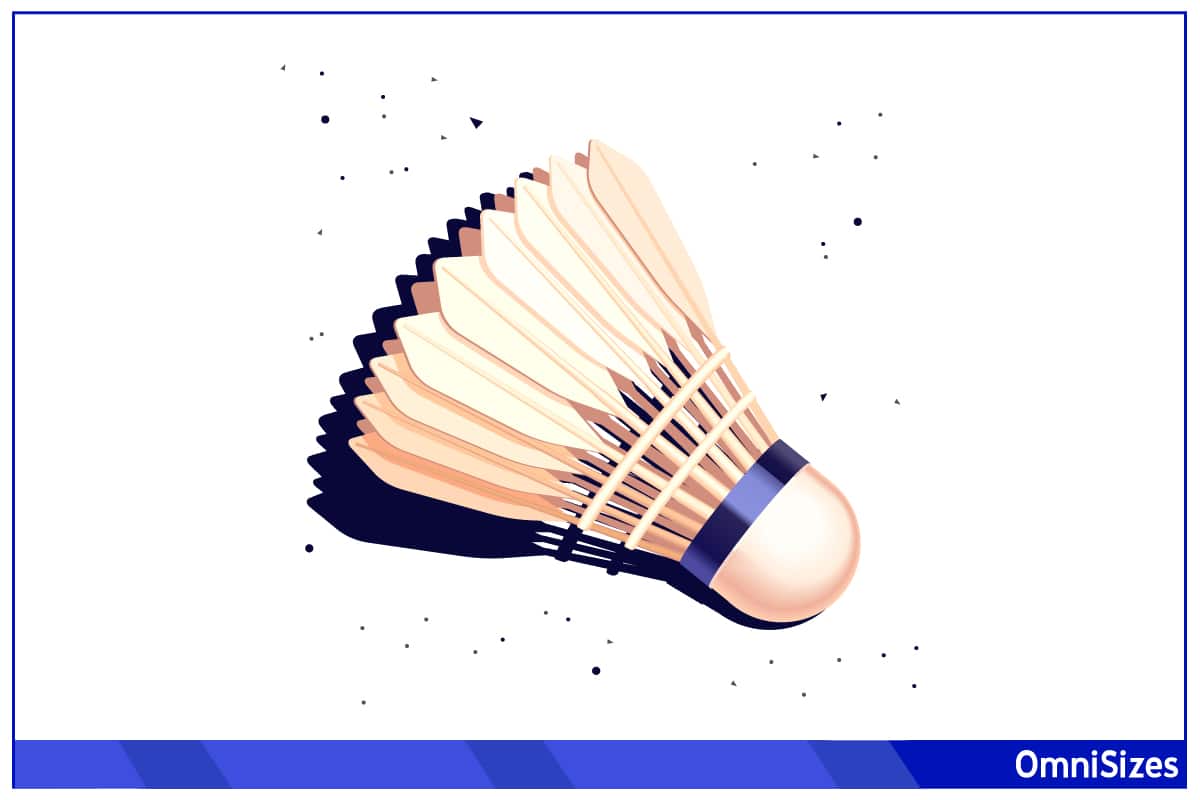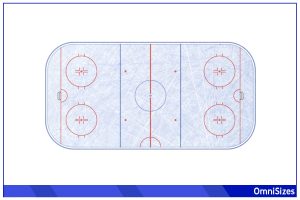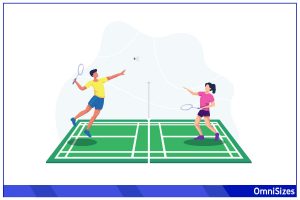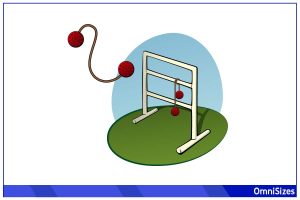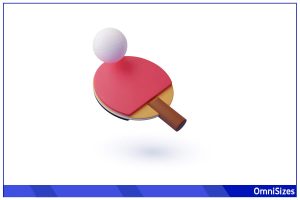Badminton hinges on several key elements, one of which is the shuttlecock. Badminton shuttlecock sizes can significantly impact a player’s game. These feathered or synthetic projectiles are made to a single size specification, but there are variations with each shuttlecock.
The size specifications of the typical badminton shuttlecock are as follows:
- Head Diameter: 0.98 to 1.1 inches (2.5 to 2.8 cm)
- Head Height: 0.9 to 0.98 inches (2.3 to 2.5 cm)
- Feather Tip Diameter: 2.28 to 2.68 inches (5.8 to 6.8 cm)
- Feather Length: 2.5 to 2.75 inches (6.4 to 7 cm)
- Overall Length: 3.35 to 3.75 inches (8.5 to 9.5 cm)
Size variations exist, mainly regarding the overall length due to length of the individual feathers.
This guide will explain badminton shuttlecock sizes in more detail, as well as why size matters and what they’re made of.
What Are Badminton Shuttlecock Sizes?
Badminton is a unique sport that doesn’t use a ball in the traditional sense. Instead, players take turns whacking around a shuttlecock—an aerodynamic projectile with feathers pointed outward at an angle. As simple as they are, badminton shuttlecocks are made up of several important parts with different measurements.
1. Head Diameter and Height
The head of a shuttlecock ranges in diameter from 0.98 to 1.1 inches (2.5 to 2.8 cm). The height of the shuttlecock’s head is another key dimension, measuring between 0.9 to 0.98 inches (2.3 to 2.5 cm).
2. Feather Length and Diameter
The feather tip diameter ranges from 2.28 to 2.68 inches (5.8 to 6.8 cm). The length of these feathers falls between 2.5 to 2.75 inches (6.4 to 7 cm).
3. Overall Length
The total length of the shuttlecock, from tip to end and standing upright, varies from 3.35 to 3.75 inches (8.5 to 9.5 cm).
Why Does Badminton Shuttlecock Size Matter?

Size matters in badminton shuttlecocks because it directly affects how they fly and how fast they travel through the air. The balance between size and aerodynamics is key to achieving the desired gameplay.
Influence on Player Control and Strategy
Larger shuttlecocks can be easier to hit and control, so players have more time to position themselves and execute shots. Smaller shuttlecocks, however, require quicker reflexes and precise timing, thus demanding more skill and strategy.
Adaptation to Different Playing Environments
Outdoor play often involves factors like wind, which can drastically affect the shuttlecock’s flight. In such cases, shuttlecocks with larger dimensions can help maintain a consistent flight pattern. Indoor environments, shielded from external elements, allow for more flexibility in size choice. So, players may favor smaller, speedier shuttlecocks.
Regulation and Tournament Play
In professional and tournament settings, shuttlecock size must meet specific regulations to ensure fair play. The size dictates the speed and trajectory of the shuttlecock to maintain consistency across competitive matches.
What Are Badminton Shuttlecocks Made of?

Badminton shuttlecocks might look simple, but their construction is a blend of careful design and specific materials.
1. Feather Shuttlecocks
The traditional choice for shuttlecocks is feathers, specifically from the wing of a goose. These feathers provide a unique combination of lightness and durability. A standard feathered shuttlecock consists of 16 feathers fixed into a base.
2. Synthetic Shuttlecocks
Synthetic materials like nylon have become a common alternative. These shuttlecocks are known for their durability and consistent performance. Synthetic shuttlecocks also tend to be more cost-effective and weather-resistant, so they’re a great choice for outdoor play.
3. The Base
At the base of every shuttlecock is the cork. Typically made from natural cork, rubber, or a composite material, this base provides the weight and balance needed for the shuttlecock’s flight. The cork’s quality can significantly affect the shuttlecock’s bounce and response to the racket.
How Long Do Badminton Shuttlecocks Last?

The lifespan of a badminton shuttlecock varies depending on its material and usage.
Feather shuttlecocks, favored in professional games for their flight and precision, typically last for 1 or 2 games. They’re more delicate, especially when used in powerful strikes.
Synthetic shuttlecocks, made from materials like nylon, offer greater durability and can last for several games, making them a go-to for recreational play or practice.
The longevity also hinges on playing conditions and the intensity of the game. Regular players might find themselves replacing feather shuttlecocks more frequently, while synthetic ones prove more resilient over time.
You can usually tell when it’s time to replace a badminton shuttlecock when its flight pattern becomes erratic and unpredictable. The condition of the feathers can also be an indicator—if they’re warped, it’s time to swap it out for a fresh one.
How Much Does a Badminton Shuttlecock Weigh?
A badminton shuttlecock’s weight is pretty light, usually falling between 4.74 to 5.50 grams. The precise weight can vary slightly depending on the type and materials used. Feather shuttlecocks are often at the lighter end of this spectrum. Synthetic shuttlecock might weigh a bit more but still stay within this range.
